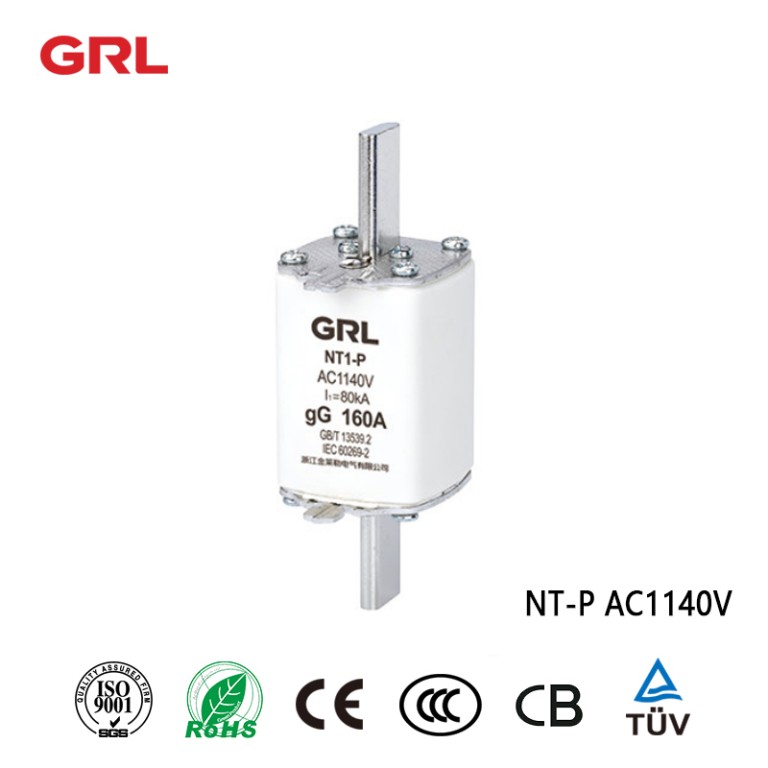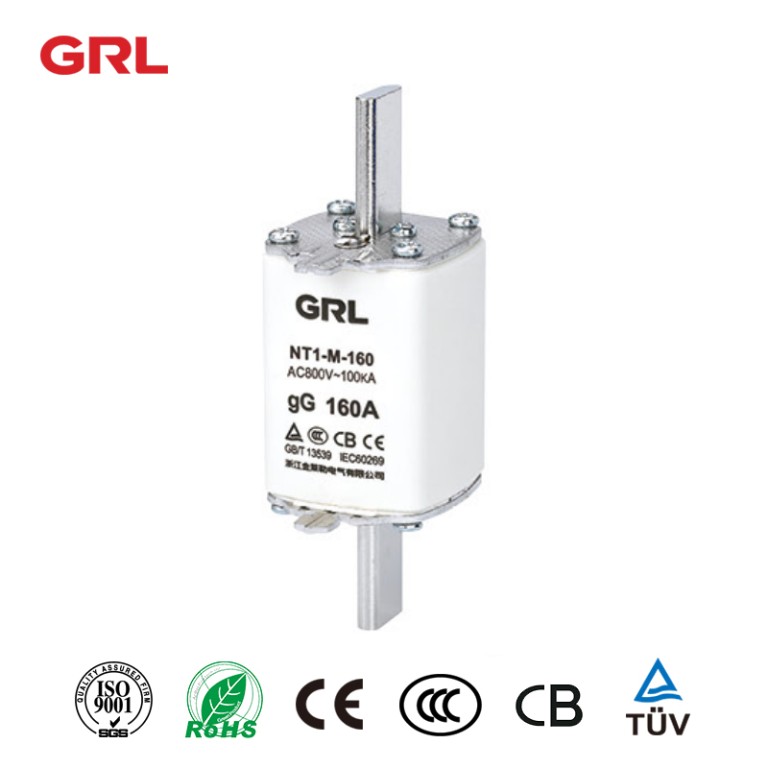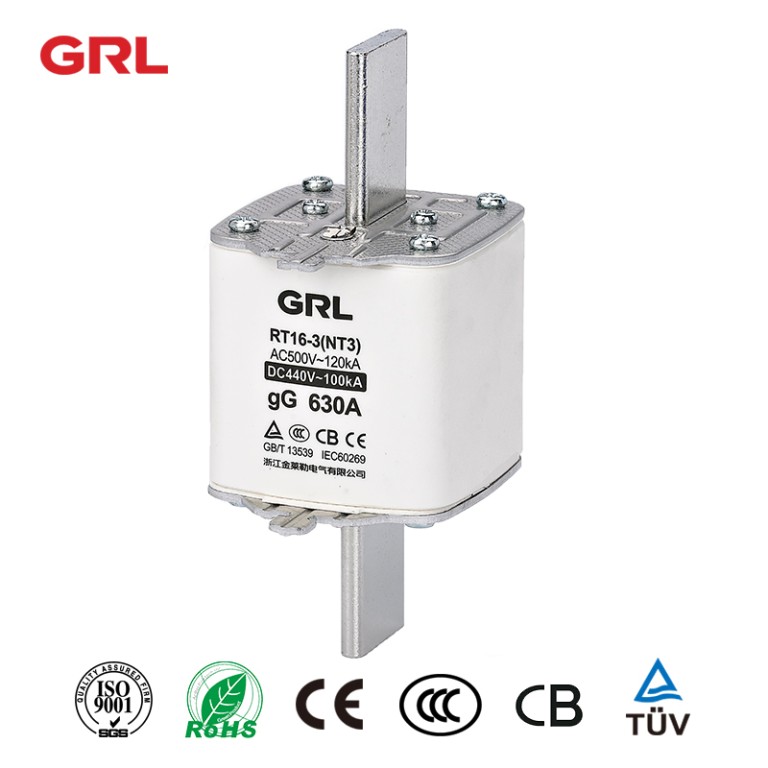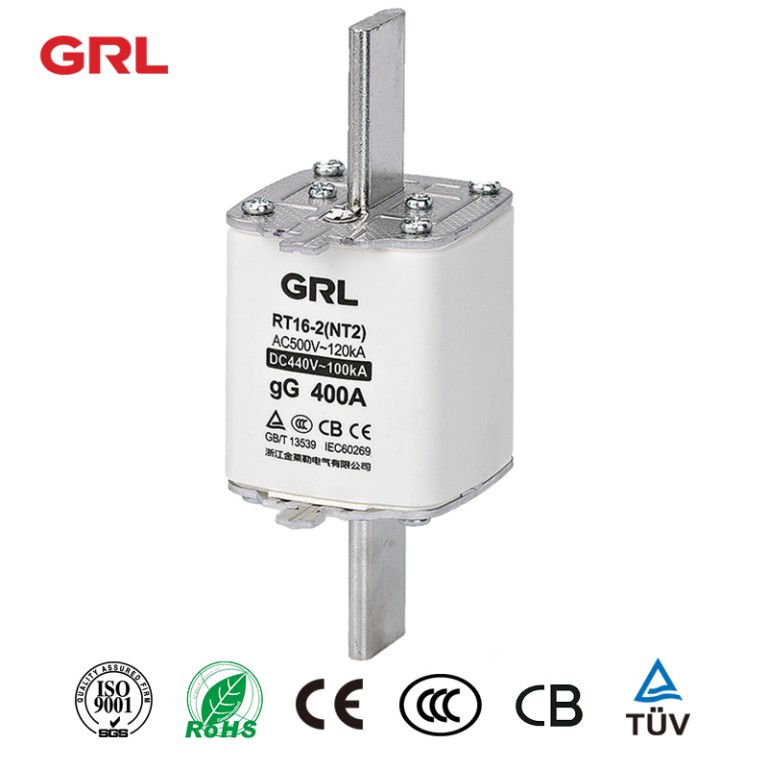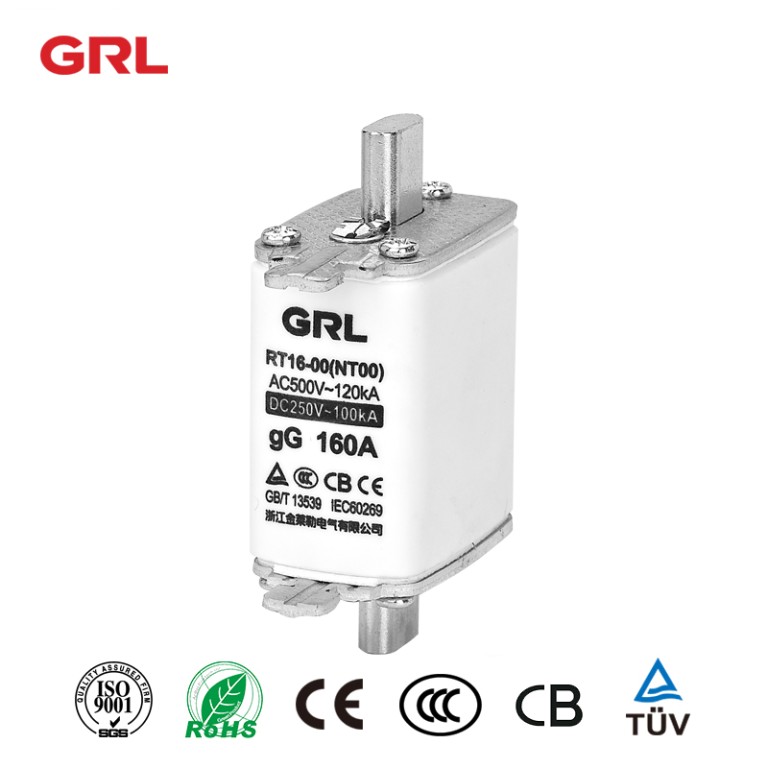The energy storage protection fuse link is specifically designed for the protection of modern energy storage systems. With a focus on reliability and safety, this fuse link is essential for safeguarding battery systems from potential overcurrent and short-circuit events. Its high-performance capabilities make it an indispensable component in various energy storage applications.
Key features of energy storage protection fuse link
1. High Voltage Rating
Capable of handling up to DC 1500V, making it suitable for large-scale energy storage systems.
2. Wide Current Range
Available in multiple current ratings from 100A to 3000A, offering flexibility for different application needs.
3. High Breaking Capacity
High breaking capacity: Internally filled with high-density quartz sand, with a breaking capacity of 250kA, ensures safe interruption of fault current and prevents damage to key components.
4. Durable Construction
Durable ceramic housing, the conductive material is T2 grade copper, good conductivity. Carefully designed to withstand harsh working conditions, ensuring long-lasting performance.
Technical parameters of energy storage protection fuse link
Applications of energy storage protection fuse link
1. Solar Energy Systems
Essential for protecting photovoltaic arrays and associated battery storage systems from overcurrent conditions.
2. Wind Energy Storage
Provides reliable protection for wind turbine storage systems, ensuring continuous and safe operation.
3. Battery Energy Storage Systems (BESS)
Used in residential, commercial, and industrial battery storage units, offering superior short-circuit protection.
4. Electric Vehicle Charging Stations
Ensures the safety of energy storage components within EV charging infrastructure.
Why choose our energy storage protection fuse link?
Our fuse link is not just a component, but a critical investment in the safety and reliability of your energy storage systems. It combines advanced protection features with robust construction, ensuring your systems remain operational and efficient under all conditions.
Operational condition
1.Working humidity range: At a maximum temperature of 40℃, the relative humidity does not exceed 50%. At a maximum temperature of 20℃, the relative humidity should not exceed 90%.
2.Normal operating temperature range: -5℃ to 40℃. Permissible temperature range: -40℃ to 80℃.
3.Altitude: no more than 2000m. When the altitude exceeds this value:
1) The temperature rise of the fuse increases by about 0.5k for every 100 meters above sea level. 2) For every 100 meters of elevation increase, the ambient temperature decreases by about 0.5 ℃ on average.
3) Under normal circumstances, fuses used in open environments can ignore the effect of altitude on rated current and still be selected in accordance with standard conditions.
4) For fuses used in closed environments, if the ambient air temperature of the box or the temperature inside the box does not decrease signiffcantly with the elevation, it can still reach more than 40℃, it is necessary to reduce the rated current capacity.
Recommended Products
leave your question
GRL Electric Co., Ltd. is one of the leading companies in the Middle And High End market of low-voltage electric in China



















